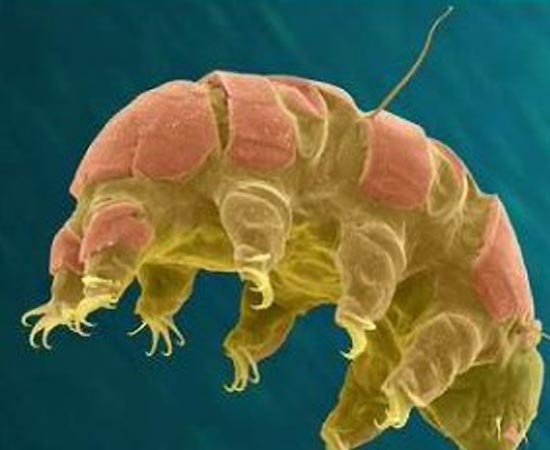Q- Which animal can survive temperatures close to absolute zero and live almost a decade without water?
Answer:
Tardigrades, commonly known as 'Water Bears' or 'Moss Piglet' can survive temperatures of -273°C (-460 °F), close to absolute zero, temperatures as high as 151 °C (303 °F), 1,000 times more radiation than other animals and almost a decade without water.

Tardigrades are microscopic, water-dwelling, segmented animals with eight legs. They exist in hot springs, on top of the Himalayas, under layers of solid ice and in ocean sediments. They are capable of reversibly suspending their metabolism and several Species regularly survive in a dehydrated state for nearly ten years. Depending on the environment they may enter this state via anhydrobiosis, cryobiosis, osmobiosis or anoxybiosis. While in this state their metabolism lowers to less than 0.01% of normal and their water content can drop to 1% of normal. Their ability to remain desiccated for such a long period is largely dependent on the high levels of the non-reducing sugar trehalose, which protects their membranes. In this cryptobiotic state the tardigrade is known as a Tun.
Category : Insects
Next Question: Which is the 'Largest Invertebrate' in the World?
Previous Question: Which is the 'Oldest Known Marsupial'?
